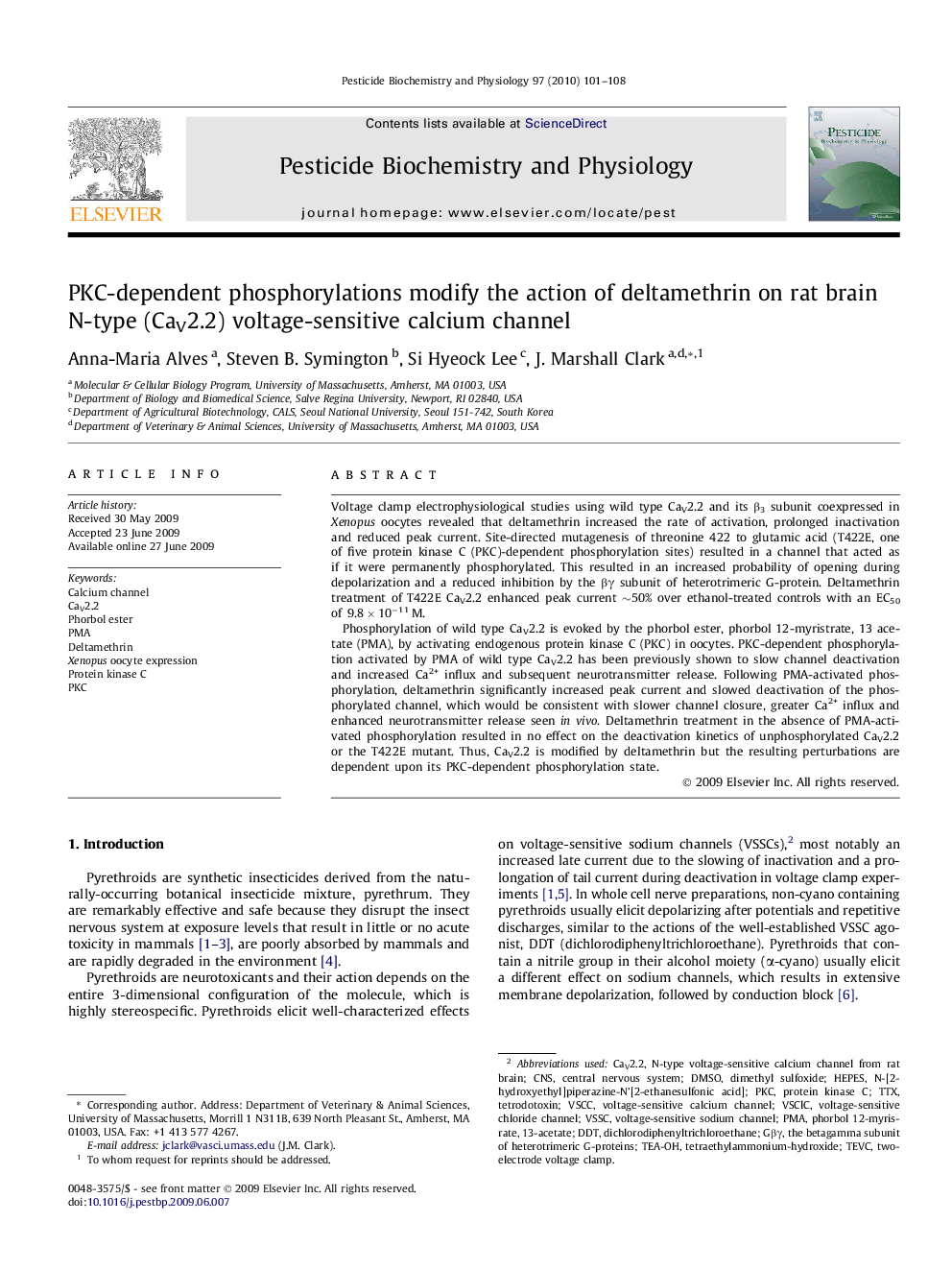| Article ID | Journal | Published Year | Pages | File Type |
|---|---|---|---|---|
| 2009784 | Pesticide Biochemistry and Physiology | 2010 | 8 Pages |
Voltage clamp electrophysiological studies using wild type CaV2.2 and its β3 subunit coexpressed in Xenopus oocytes revealed that deltamethrin increased the rate of activation, prolonged inactivation and reduced peak current. Site-directed mutagenesis of threonine 422 to glutamic acid (T422E, one of five protein kinase C (PKC)-dependent phosphorylation sites) resulted in a channel that acted as if it were permanently phosphorylated. This resulted in an increased probability of opening during depolarization and a reduced inhibition by the βγ subunit of heterotrimeric G-protein. Deltamethrin treatment of T422E CaV2.2 enhanced peak current ∼50% over ethanol-treated controls with an EC50 of 9.8 × 10−11 M.Phosphorylation of wild type CaV2.2 is evoked by the phorbol ester, phorbol 12-myristrate, 13 acetate (PMA), by activating endogenous protein kinase C (PKC) in oocytes. PKC-dependent phosphorylation activated by PMA of wild type CaV2.2 has been previously shown to slow channel deactivation and increased Ca2+ influx and subsequent neurotransmitter release. Following PMA-activated phosphorylation, deltamethrin significantly increased peak current and slowed deactivation of the phosphorylated channel, which would be consistent with slower channel closure, greater Ca2+ influx and enhanced neurotransmitter release seen in vivo. Deltamethrin treatment in the absence of PMA-activated phosphorylation resulted in no effect on the deactivation kinetics of unphosphorylated CaV2.2 or the T422E mutant. Thus, CaV2.2 is modified by deltamethrin but the resulting perturbations are dependent upon its PKC-dependent phosphorylation state.
